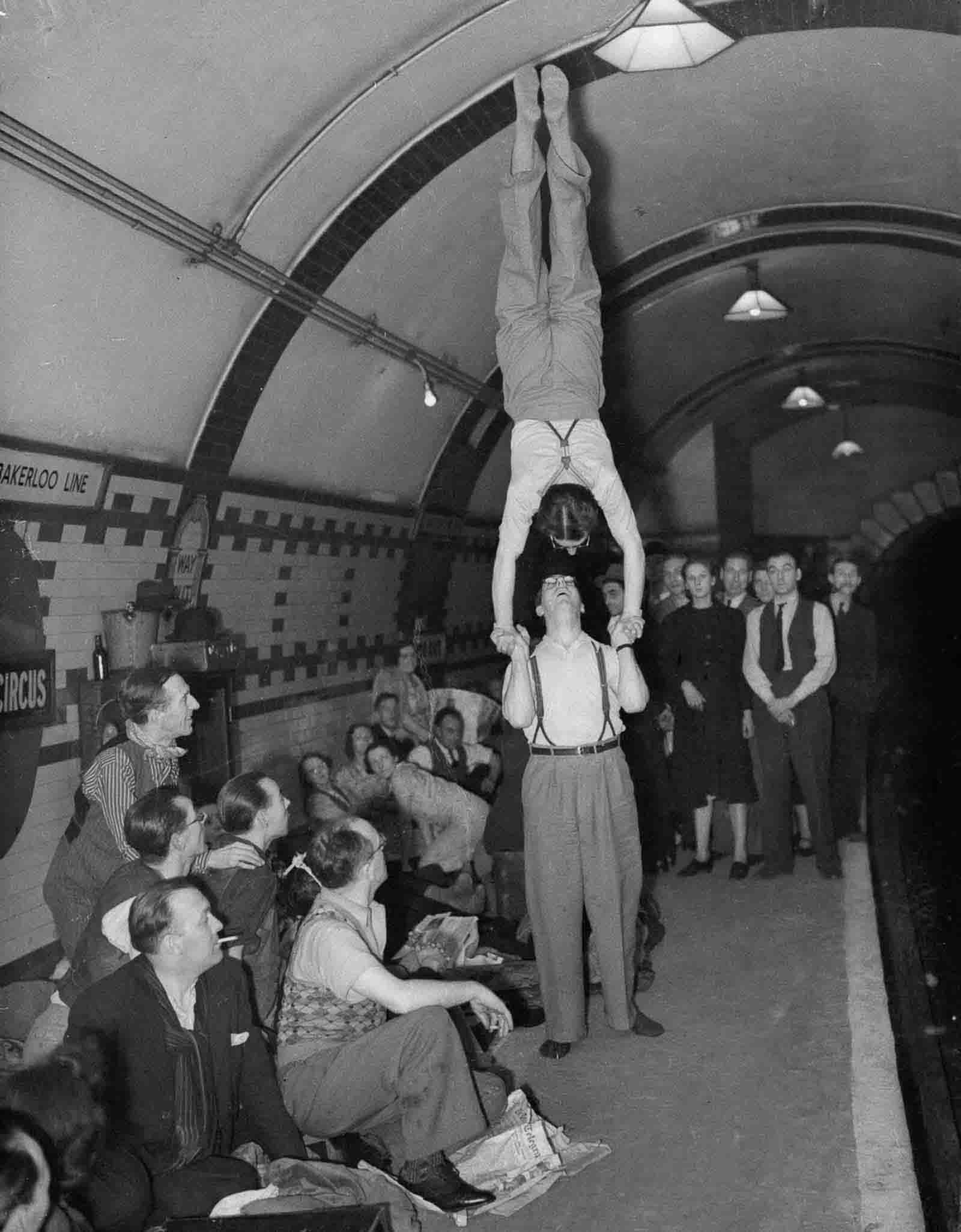30 Haunting Photos Capturing The Lives of Londoners In The Underground During World War II
During WWII, Londoners from all walks of life sought refuge from German bombings by flocking to underground stations. From September 1940 to May 1941, the Blitz campaign by the Germans targeted London and other cities in England.
The toll was heavy, with over 40,000 civilians killed, nearly half of them in London, where more than a million homes were destroyed or damaged.

Initially, the government refused to allow the use of the underground as shelters, fearing it would disrupt travel and that people might refuse to leave. However, the intense bombing forced a change, and by the second week, stations were opened to the public.
People lined up daily, entering the stations at 4:00 pm, bringing their bedding, and settling in for the night. At the height of the bombing, around 150,000 people slept in the underground each night, though this number dropped as winter set in.

Despite the relative safety, a direct hit in Stoke Newington in October 1940 killed 160 civilians. On September 27, 1940, peak usage saw 177,000 people sheltering in the underground. In response to growing demand, the government began building new deep shelters that same October.
By the end of 1940, underground shelters were improved with stoves, bathrooms, and canteen services. Tickets were issued for bunks to reduce queuing, and entertainment like concerts, films, plays, and library books became part of shelter life.

Remarkably, Londoners remained resilient. An American observer noted that the British were “staunch to the bone and won’t quit.” Suicides and drunkenness even decreased, with only two cases of “bomb neurosis” recorded per week during the first three months of the bombing.
Below are haunting photos of Londoners seeking refuge from the relentless bombings above. Each photo vividly captures how families, children, and individuals transformed the dark, crowded tunnels into their temporary homes.
1. Londoners sleeping in an Underground station during the Blitz, using both the train carriages and the platform as makeshift beds

2. A moment in an Underground station during the Blitz, where Londoners are gathered, some reading the newspaper while others rest or engage in conversation

3. Londoners sleeping in the Holborn Underground station, some lying on blankets, others resting on makeshift beds

4. Three women resting in an Underground station during the Blitz

5. Performers entertain people taking shelter in the Aldwych underground station

6. A crowd lying on the floor, huddled together with blankets and makeshift bedding
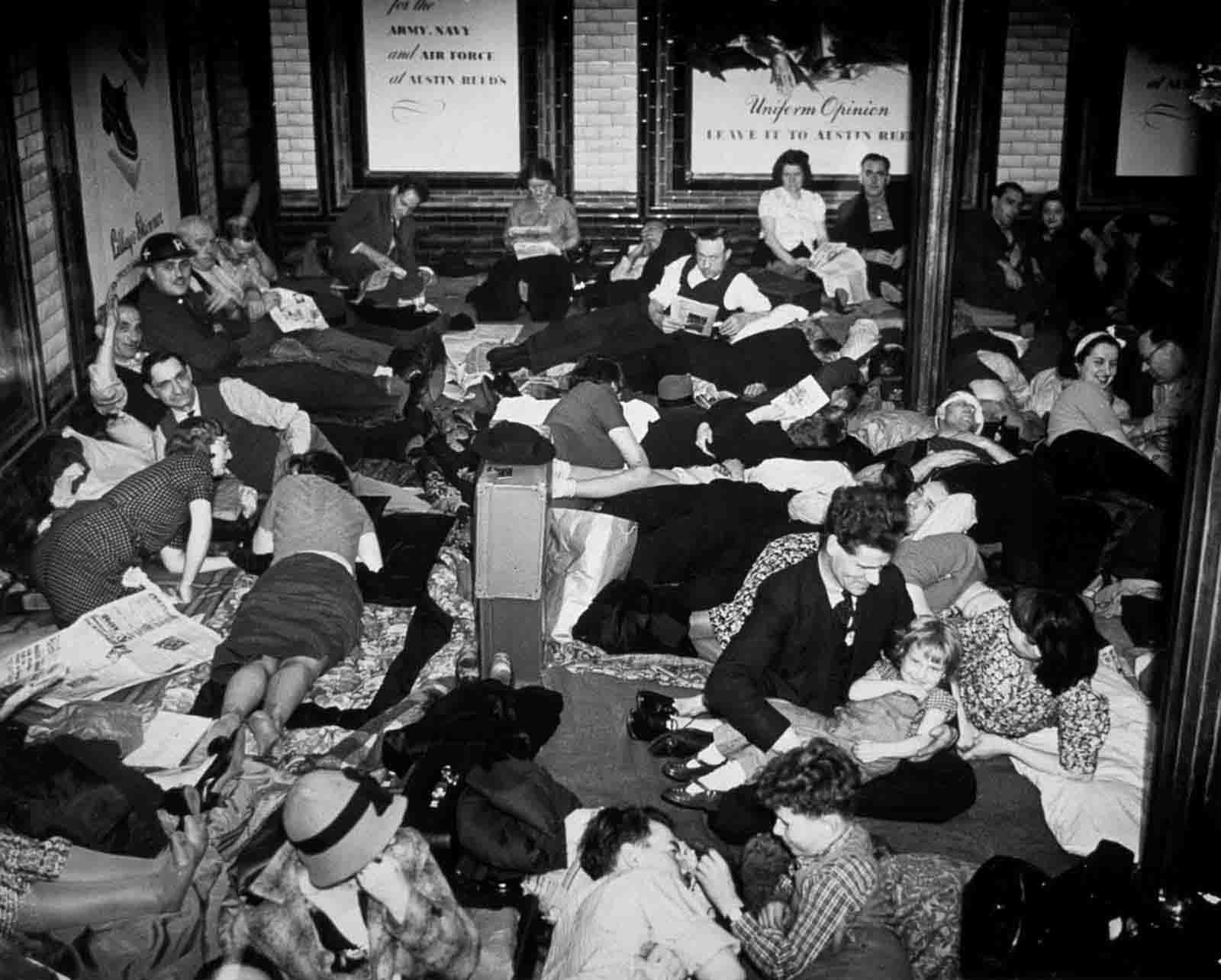
7. Londoners using an escalator as a makeshift sleeping area

8. People lying down on the steps, seeking rest wherever they can find space

9. Men, women, and children sleeping closely packed together on the floor

10. Sleeping side by side amidst the crowded conditions

11. Children sheltering in an underground station have their throats sprayed with disinfectant
12. Londoners gathered in Bounds Green Underground station,
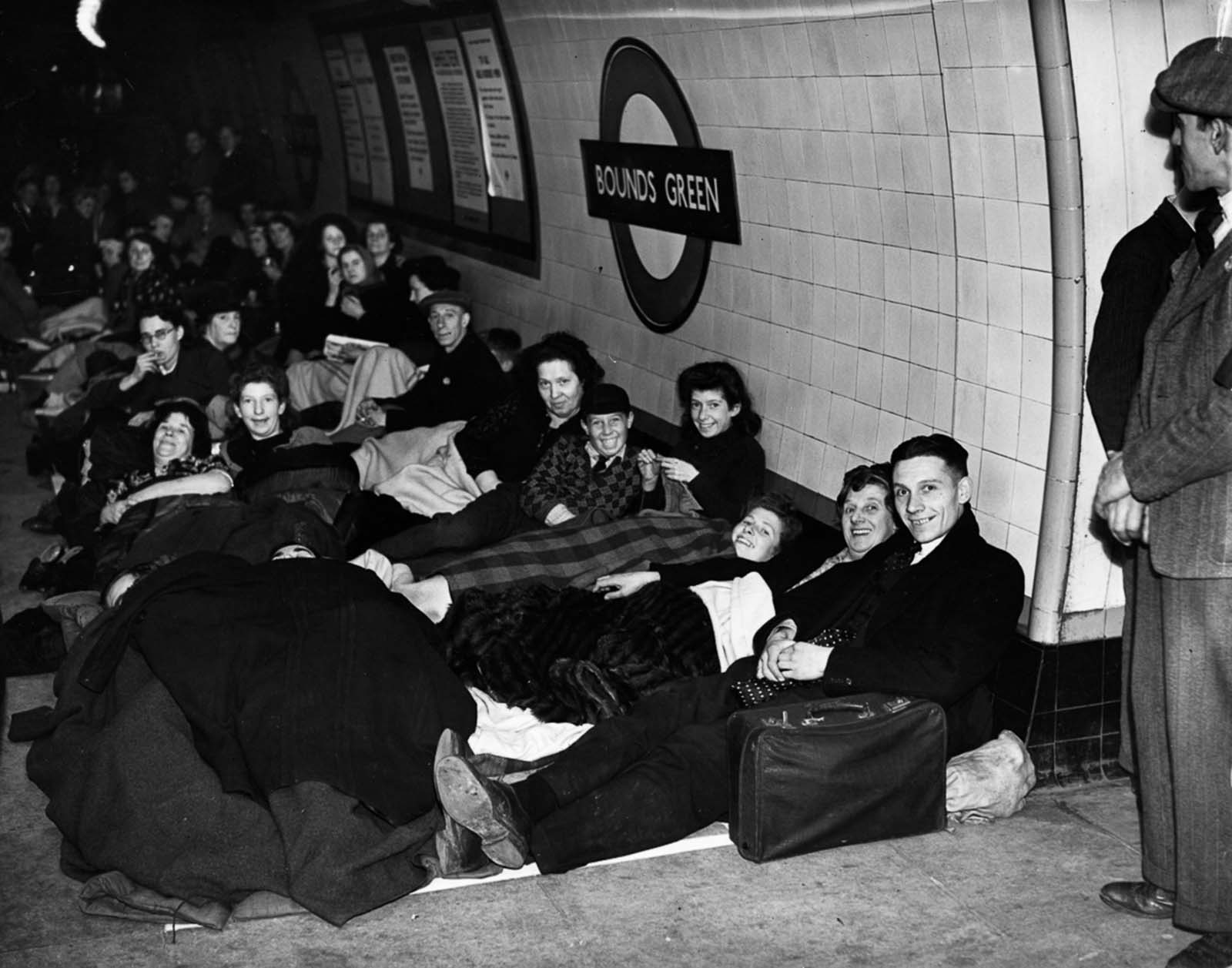
13. Sir George Wilkinson, the Lord Mayor of London, and Lord Woolton, the Minister for Food, enjoy a cup of tea in an underground shelter
14. A man walks through the station, carrying his belongings, while others rest or sit in small groups

15. The child rests peacefully on her mother’s arm in an underground station

16. British Red Cross staff examine patients sheltering in Piccadilly station
17. A group of men and women in the underground looking at the camera

18. A family sheltering in an underground during bombing time

19. Woman drinking tea in an underground
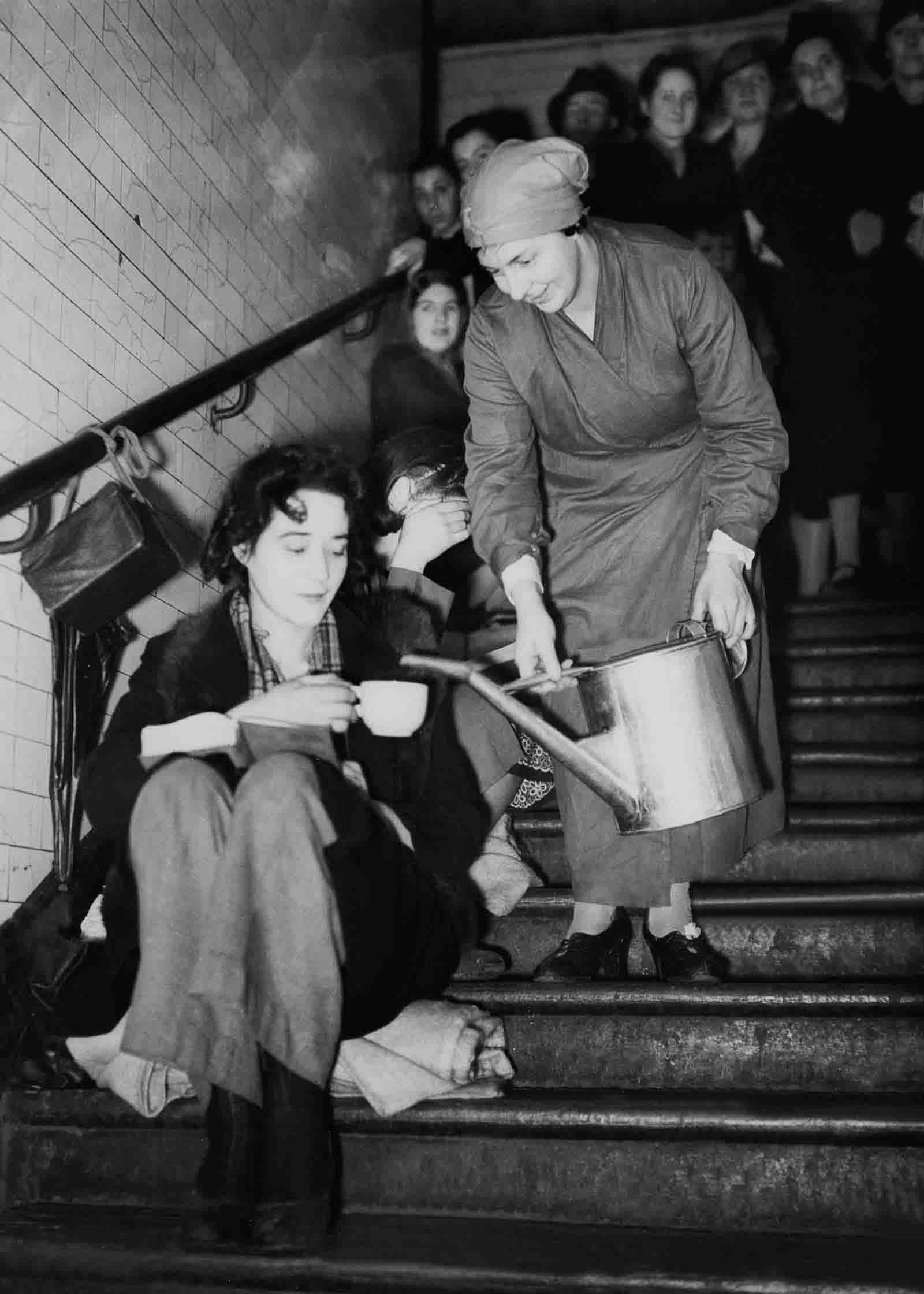
20. People sleeping on makeshift beds along the platform

21. People sitting closely on the steps in an underground

22. People lying down on the steps

23. A November 1940 census of London, found that about 4% of residents used the Tube and other large shelters, 9% in public surface shelters and 27% in private home shelters
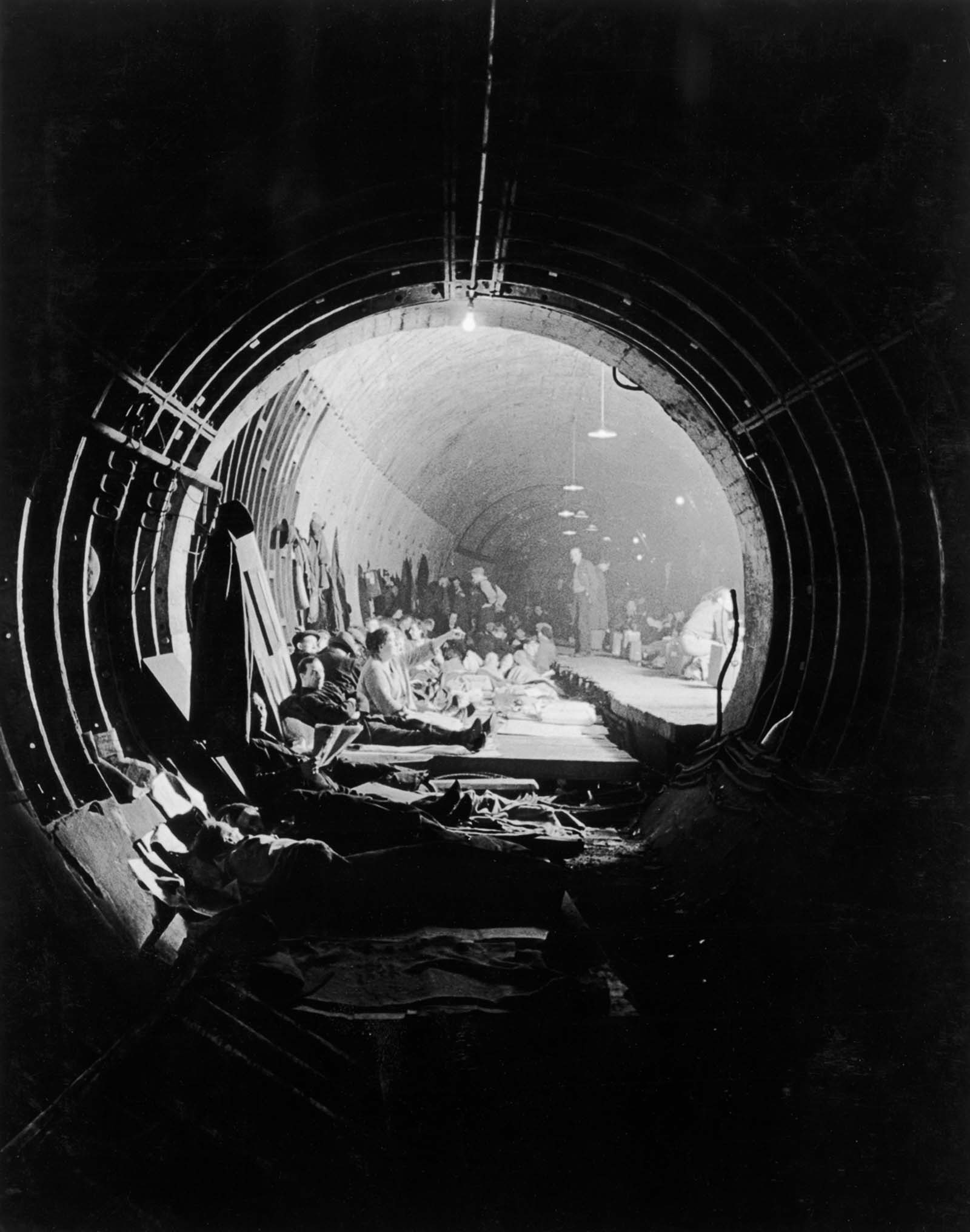
24. The Storre Brothers, a pair of music hall artistes, entertain their companions underground
25. Londoners resting on temporary bunk beds, some reading the newspaper
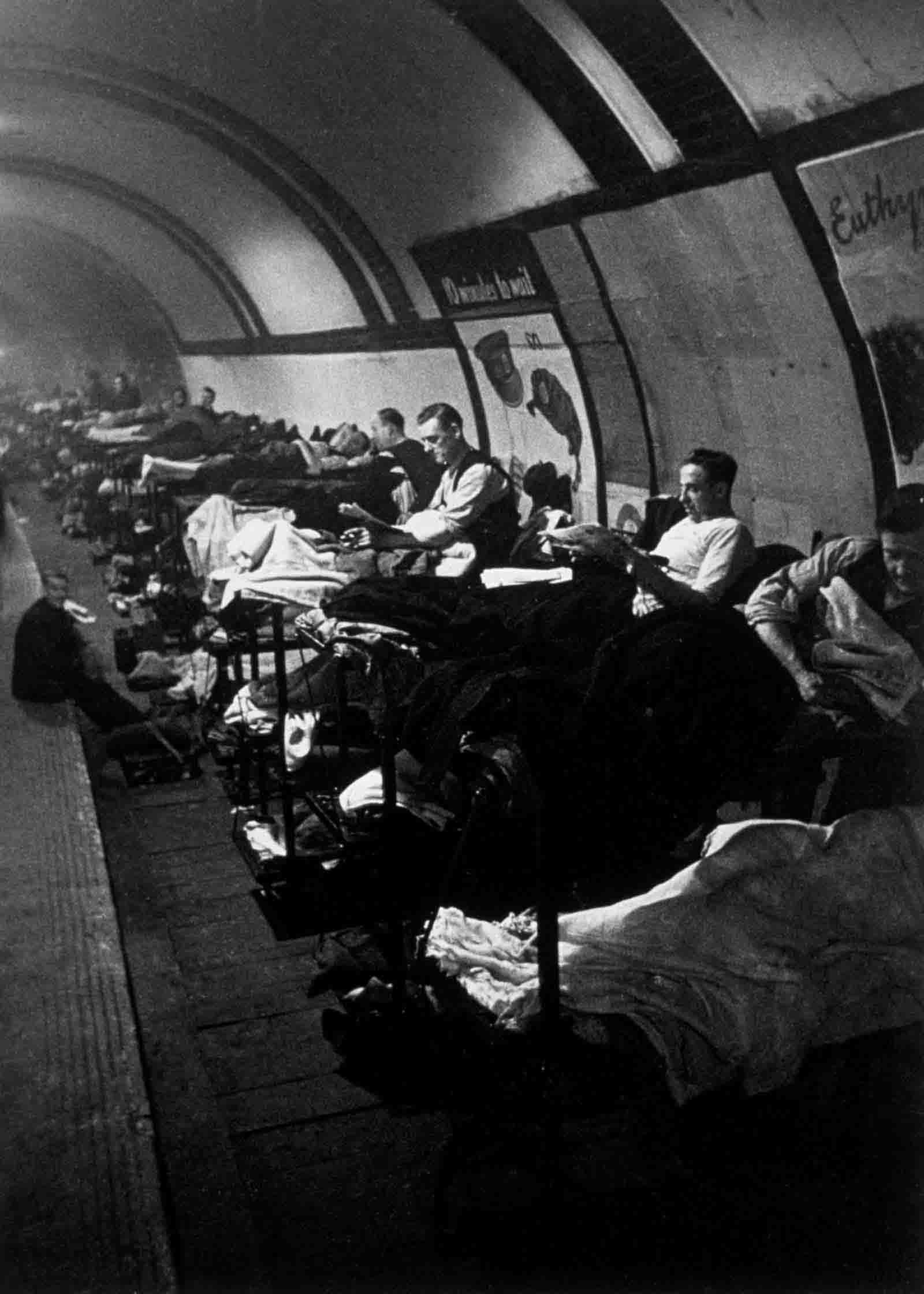
26. Londoners sheltering deep within a tunnel during the Blitz

27. A woman is seen comforting a child on one of the lower bunks in a narrow underground tunnel






